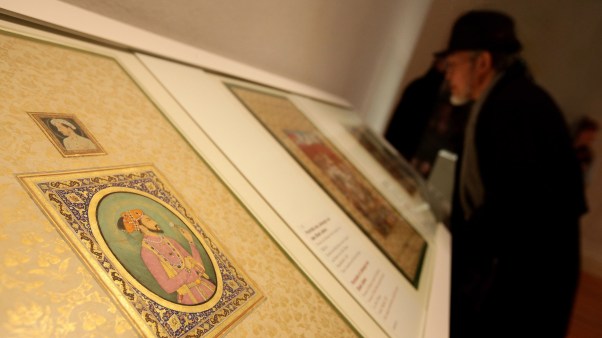In Errancy
By Elesha Coffman, associate editor of CHRISTIAN HISTORY
Innocent III, the pope who moved to crush the Cathars (see last week’s newsletter), also accidentally struck at an even bigger “heresy”: Eastern Orthodoxy. Though personally tolerant of Eastern Christian rites, he mustered the disastrous Fourth Crusade, which in 1204 forever impaired East-West relations by sacking Constantinople. However, as historian Tia M. Kolbaba ably demonstrates in The Byzantine Lists: Errors of the Latins (University of Illinois), the gulf between Western “Latins” and Eastern “Greeks” goes much deeper.
The Byzantine lists, which detailed the errors of the Western church, were written by educated Greek clergy for Greek lay persons to discourage them from picking up Latin practices from visiting crusaders or other contacts with the West. The first list (not counting a list-like 867 encyclical from Patriarch Photios) was written by Patriarch Keroularios, or Cerularius, in 1054, in reaction to a list of Greek errors handed to him by Pope Leo IX’s representative, Cardinal Humbert. Keroularios and Humbert excommunicated each other, leading to the familiar designation of 1054 as the date of the Great Schism. Keroularios’s list would be copied and expanded upon, then joined with other lists, through 1281. The number of Latin errors identified eventually reached 75.
According to Kolbaba, historians have never really studied the lists because of their unusual content: a mixture of theological, liturgical, and seemingly personal disagreements. Keroularios’s list accuses Latins of, among other things, using unleavened bread in the Eucharist, eating unclean meats, shaving, adding “and the Son” to the Nicene Creed (the “filioque” clause), forbidding priests to marry, allowing bishops to wear rings, and baptizing with only one immersion. Keroularios sums up by saying, “Therefore, if they live in such a way and, enfeebled by such customs, dare these things which are obviously lawless, forbidden, and abominable, then will any right-thinking person consider that they are at all to be included in the category of the orthodox? I think not.”
In the lists, we see one of the main differences between Western and Eastern thought. Latin antiheretical works focused on doctrinal differences, but to Greeks, Kolbaba writes, “It is the things these ‘Romans’ do—not what they believe and teach—that place them beyond the pale.” To Latins, practice, including liturgy, is an outgrowth of doctrine and therefore secondary; to Greeks, practice shapes belief and is therefore of ultimate importance.
Given this wholly different mindset, Westerners tend to look at the Byzantine lists and see complaints so odd, so trivial, that they must mask something else. Kolbaba looks and argues, “To say that such matters are petty or trivial reflects a very modern and very intellectual bias. Why are we so sure that the doctrinal content of a religion is more important, more central, and more characteristic than its ritual and normative content?”
Kolbaba’s meticulous scholarship will make this an eye-opening book for Byzantinists (all five of you out there), while her conclusions—like “Byzantines were conservative only in their dreams” and “We tend to accuse our enemies of what we most hate and fear in ourselves”—keep it from becoming an eye-drooping read for the rest of us. Perhaps most relevant for students of Christian history is her view that the lists, and her treatment of them, “suggest a new synthesis, based on the hypothesis that religion and the rest of society are inseparable, and that the debate about religion versus other factors is sterile.” I have to applaud a scholar who can start with a pile of obscure Greek manuscripts and arrive at—and support—a conclusion like that.
* For more on this subject, see Christian History issue 54: Eastern Orthodoxy.
Elesha can be reached at cheditor@ChristianityToday.com.
Copyright © 2000 by the author or Christianity Today/Christian History magazine.Click here for reprint information on Christian History.








